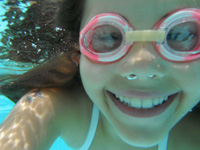Safe Sunscreens, are you really protected?

For years Australian's have been warned to slip, slop, slap, as we have the higest rate of skin cancer in the world, bu what if your sunscreen was causing you more damaged.
Recently highlighted on Today Tonight, Nanotechnology and chemical UV absorbers allow creams to absorb into your skin faster, which could actually result in serious skin damage. The key ingredients to watch out for are Titanium Dioxide & Zinc Oxide (Micronised).
In an effort to provide comsumers with gentle, easy to absorb sunscreens, some brands are potentially sacrificing our safety.
So what does this all mean? And should we worry about Nanoparticles & chemical UV absorbers?
According to Friends for life:
- Some nanoparticles produce free radicals that can damage DNA and skin cells, especially with exposure to UV light
- If nanoparticles are absorbed into living skin cells, they could make sun damage to our skin worse, in a worst case scenario increasing the risk of skin cancer
- We do not yet know whether or not nanoparticles in sunscreens penetrate intact, healthy skin, although it seems possible they will be taken up through damaged skin. Many chemicals used in sunscreens act as penetration enhancers, which could also make skin penetration by nanoparticles more likely
- Nanoparticles are not subject to safety testing before being allowed in sunscreen
- Nanoparticles in sunscreens are not subject to mandatory labelling. This is especially a problem for people with skin conditions such as eczema, who may be more vulnerable to skin penetration, who cannot choose to avoid using nano
For more information and to answer all your questions on Nanoparticles, visit Friends of the Earth website http://nano.foe.org.au/safesunscreens/questions-answers#q6
What are Nanoparticles & chemical UV absorbers?
"Nanoparticles in your Sunscreen"
Zinc oxide and titanium dioxide are common sunscreen ingredients that reflect UV light. Most larger particles of zinc oxide and titanium dioxide are white and opaque, meaning that products they are used in can leave a white film on the skin (although some companies have developed a method to make these larger particles transparent). Particles can also be ground down to an extremely small 'nano' size where they become clear or transparent. In 2006 the Therapeutic Goods Administration said that 70% of titanium dioxide sunscreens and 30% of zinc sunscreens sold in Australia contained manufactured nanoparticles.1
Sunscreen is still an important preventative measure to Australians of all ages to reduce the risk of developing skin cancer. But it's also just as important to make sure that you choose a Sunscreen that does not contain nanoparticles and chemical UV-absorbers that may cause additional damage or skin sensitivity & problems.
To my disappointment, some of my most trusted brands in my cupboard included these ingredients like: Hamilitons Toddler, Nivea Sun Light Feel - containing Titanium Dioxide & Banana Boat Kids Pump Lotion (exp 2013) contained Zinc Oxide (Micronised). My 2012 exp Banana Boats did not contain either ingredient which would suggest it's new to the brand. But we will be going through all the brands one by one.
In the mean time you can check out some suscreen brands that have already been identified or cleared of Nanotechnology & chemcial UV absorbers at http://nano.foe.org.au/sites/default/files/Safe%20Sunscreen%20Guide%202011-12%20colour.pdf
There is also a list of cosmetics that contain sunscrenn that have been cleared or use nanopariticles & chemical UV absorbers.
Plus make sure you register or send an email to the Minister of Health to request regulatory reform ensuring consumers are aware of full ingredients.
1 Australian TBA. 2006. Safety of sunscreens containing nanoparticles of zinc oxide or titanium dioxide.
MORE
- Rack It Range Extensions
- Lunch Style 2016
- Nicholas Demos Solving Life Issues Online...
- Warm Up With DeLonghi This Winter
- Chill Out Chair
- Spring 2014 Dulux
- in.cube8r
- Forty Winks: Buyer's Guide To Bedding
- Ageing In One's Own Home
- European Apothecary Sea Salt Candle
- Survey Reveals Housework Wars Behind Closed Doors



